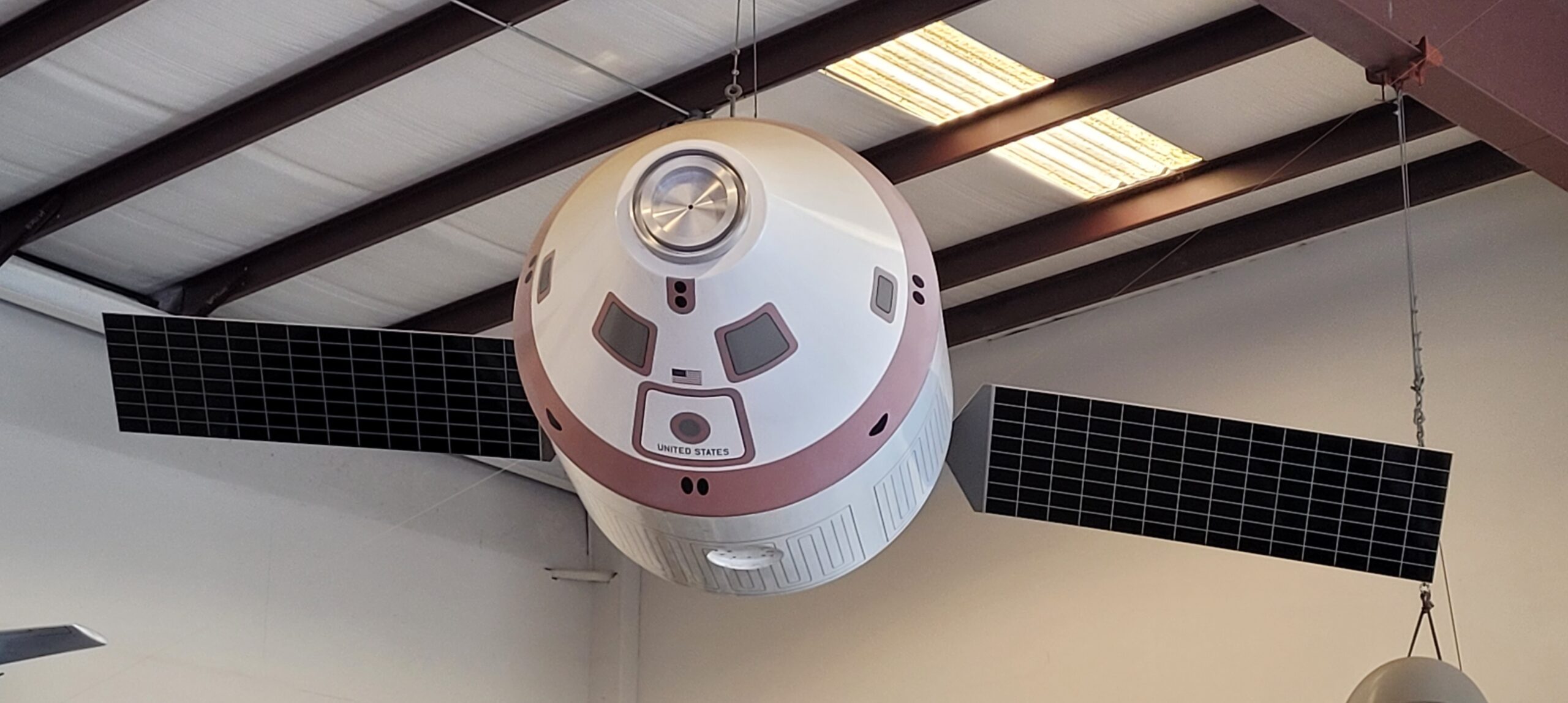The museum has a mock-up of the NASA Crew Exploration Vehicle (CEV). The CEV was part of a modular space system envisioned by NASA in 2004 called Constellation intended to carry humans to the International Space Station and later to the moon and Mars. The CEV was to be carried into space aboard the Orion spacecraft – a space shuttle-derived launch vehicle as part of the Constellation program.
Proposals for the CEV contract were submitted by teams of Lockheed Martin and Boeing/Northrop Grumman. The designs were very similar because NASA rejected any original designs at the time and desired the configurations to be based on NASA design concepts. NASA awarded the CEV contract to Lockheed Martin on August 31, 2006.
The CEV was designed for a 4-6 member crew and was based on NASA’s Apollo spacecraft as a service module and launch-abort system. The CEV was to be produced in both manned and unmanned versions capable of transporting cargo to and from the International Space Station. This plan underwent many revisions over the years and has evolved to include both the Constellation and Artemis Programs as NASA needed a replacement for the Space Shuttle and boosters for unmanned missions.
With the scope of NASA’s plans increasing, so were the costs. An external review in 2009 found that the Constellation Program could not be executed without substantial increases in funding. Following congressional testimony, the administration decided to exclude Constellation from the 2011 federal budget request. However, the Orion CEV survived this cancellation to be used.

